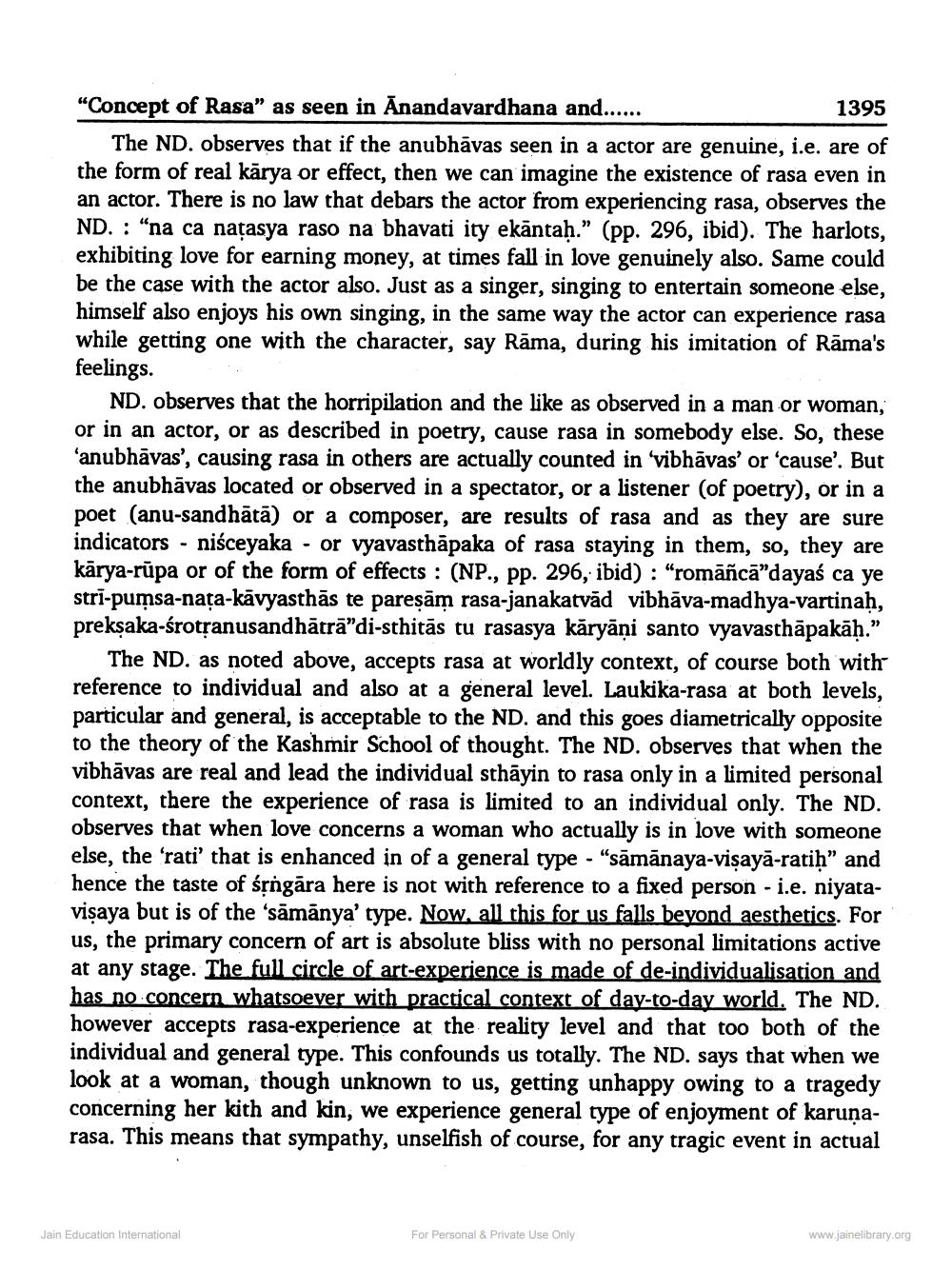________________
“Concept of Rasa" as seen in Anandavardhana and......
1395 The ND. Observes that if the anubhāvas seen in a actor are genuine, i.e. are of the form of real kārya or effect, then we can imagine the existence of rasa even in an actor. There is no law that debars the actor from experiencing rasa, observes the ND. : “na ca natasya raso na bhavati ity ekāntah.” (pp. 296, ibid). The harlots, exhibiting love for earning money, at times fall in love genuinely also. Same could be the case with the actor also. Just as a singer, singing to entertain someone else, himself also enjoys his own singing, in the same way the actor can experience rasa while getting one with the character, say Rāma, during his imitation of Rāma's feelings.
ND. observes that the horripilation and the like as observed in a man or woman. or in an actor, or as described in poetry, cause rasa in somebody else. So, these 'anubhāvas', causing rasa in others are actually counted in 'vibhāvas' or 'cause'. But the anubhāvas located or observed in a spectator, or a listener (of poetry), or in a poet (anu-sandhātā) or a composer, are results of rasa and as they are sure indicators - niśceyaka - or vyavasthāpaka of rasa staying in them, so, they are kārya-rūpa or of the form of effects : (NP., pp. 296, ibid): “romāñcā"dayaś ca ye strī-pumsa-nata-kāvyasthās te pareşām rasa-janakatvăd vibhāva-madhya-vartinah, preksaka-śrotranusandhātrā"di-sthitās tu rasasya kāryāni santo vyavasthāpakāh."
The ND. as noted above, accepts rasa at worldly context, of course both with reference to individual and also at a general level. Laukika-rasa at both levels, particular and general, is acceptable to the ND. and this goes diametrically opposite to the theory of the Kashmir School of thought. The ND. observes that when the vibhāvas are real and lead the individual sthāyin to rasa only in a limited personal context, there the experience of rasa is limited to an individual only. The ND. observes that when love concerns a woman who actually is in love with someone else, the 'rati' that is enhanced in of a general type - "sāmānaya-visayā-ratih" and hence the taste of śộngāra here is not with reference to a fixed person - i.e. niyatavisaya but is of the 'sāmánya' type. Now, all this for us falls beyond aesthetics. For us, the primary concern of art is absolute bliss with no personal limitations active at any stage. The full circle of art-experience is made of de-individualisation and has no concern whatsoever with practical context of day-to-day world. The ND. however accepts rasa-experience at the reality level and that too both of the individual and general type. This confounds us totally. The ND. says that when we look at a woman, though unknown to us, getting unhappy owing to a tragedy concerning her kith and kin, we experience general type of enjoyment of karuņarasa. This means that sympathy, unselfish of course, for any tragic event in actual
Jain Education International
For Personal & Private Use Only
www.jainelibrary.org




